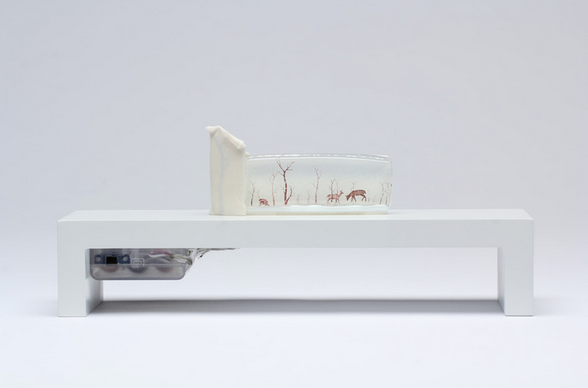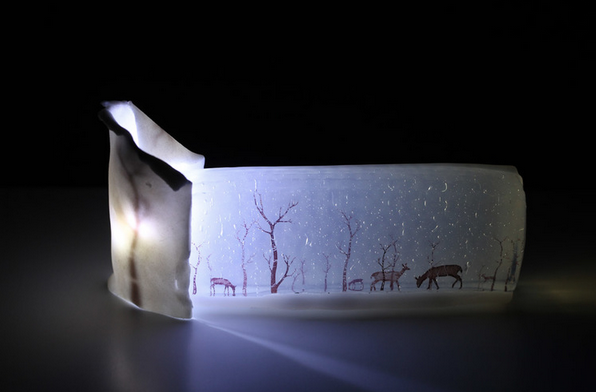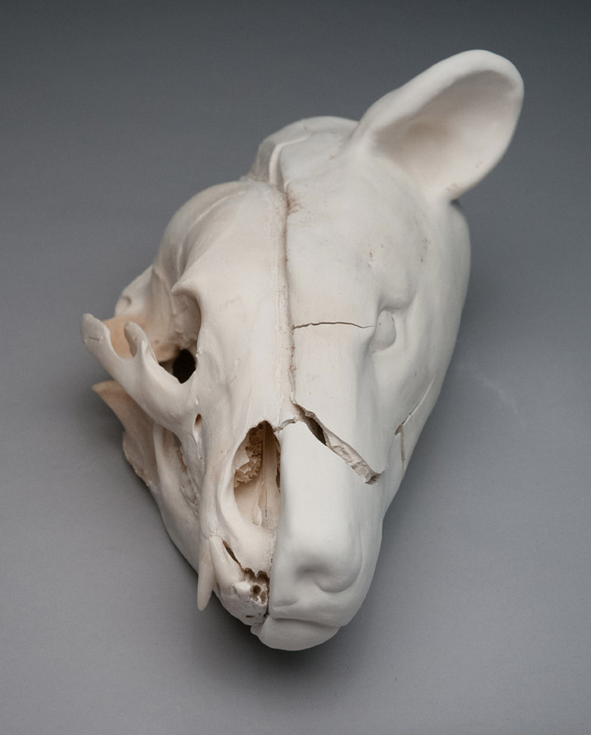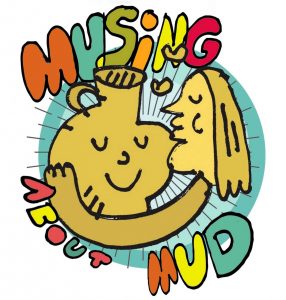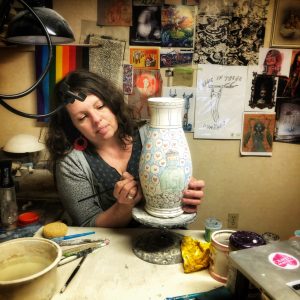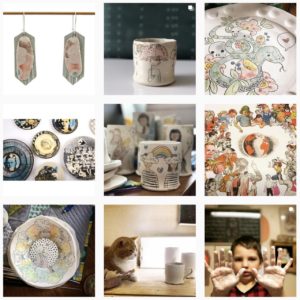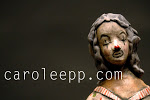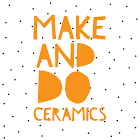by Carole Epp | Feb 26, 2019 | job posting
Alberta University of the Arts, Calgary, Alberta, Canada Req #177
Tuesday, February 19, 2019
The School of Craft + Emerging Media at Alberta University of the Arts (formerly ACAD) welcomes applications for the following limited term faculty appointment commencing end of August 2019 until April 30, 2020
Visiting Faculty, Ceramics
Why AUArts?
A leading centre of education and research since 1926, AUArts energizes art and design in Canada and internationally. We engage the world, create possibilities, and connect with brilliant minds in all corners of the globe.
Above all, we are passionate about creativity and innovation through Art, Craft and Design, and the people who create it.
Calgary is our home base – a vibrant, cosmopolitan urban centre, a safe and friendly atmosphere, and outstanding potential for adventure in nearby mountain parks.
We hope you will join us at AUArts (where creativity matters).
About the School of Craft + Emerging Media, Ceramics Program
Ceramics faculty are a diverse, engaged group of notable teachers and practitioners connected to the field at home and abroad. Each year, a new visiting artist complements the energy and expertise of ceramics faculty, teaching and working alongside students in the studio. The visiting artist contributes a fresh and diverse perspective, enhancing the learning experience and serving as a catalyst for critical dialogue within the University.
In the Ceramics program students explore both functional and sculptural approaches to the discipline. A comprehensive, studio-based, and theoretical program of study is supported by access to emerging technologies as well as the integration of historical precedents with contemporary practice.
>>Click here to find out more about SC+EM, Ceramics Program
The Opportunity0
(Competition # 1819-FE-FT-26) To complement existing instructional resources, this position will instruct four (4) 4.5 hour-long studio courses at all levels of the undergraduate BFA in Ceramics program. Salary will be commensurate with experience and education. In addition, the successful candidate will be provided with two (2) course releases towards research and studio practice. They will be required to report and present on research activities as well as mount an exhibition of their research during their appointment at the University.
The successful candidate will be capable of teaching all forms of Ceramic practice through core courses and studio supervision. The candidate will possess an active studio practice that will contribute to the breadth of the program and demonstrate a critical and creative engagement with contemporary discourse on Craft and Ceramics. In combination with a collaborative spirit and professional commitment to the field, experience in academic service, curricular innovation, and Ceramics studio management will be considered an asset.
Responsibilities include:
- Teaching two (2) studio courses per semester at all levels of AUArts’ Ceramics program
- Maintaining a research/studio practice, and contributing to research and scholarship in the field of contemporary Craft, specifically Ceramics
- Creating and exhibiting a new body of work
- Reporting and presenting on research activities in the form of artist talks and/or workshops
- Demonstrating a commitment to pedagogical and academic excellence
- Participating in academic service, curricular program development, and the management of the Ceramics studio environment (as appropriate)
The successful candidate will have:
- An MFA or an equivalent degree or combination of education and professional experience in Ceramics
- Previous post-secondary teaching experience
- A professional exhibition record as a Ceramist
- Excellent technical skills
- A wide knowledge of all aspects of the discipline, with a particular regard for international practice in Ceramics
- A community-oriented disposition: comfortable interacting with students, faculty, artists, and the public; able to balance research, practice, and pedagogy
Preference will be given to applicants with a strong studio practice rooted in pottery or the vessel making tradition.
How to Apply
>>>Please submit applications by clicking on the Apply Now tab at the bottom of this page. The application must include a cover letter, a current CV, and the following:
- two statements: one outlining teaching philosophy and the other studio practice
- a digital portfolio of recent studio work containing twenty (20) images accompanied by a corresponding numbered list including titles, medium, and size
- A Research Statement on the topic you intend to pursue (topics can include explorations in creative practice, technical process, content development, etc.)
Letters of recommendation are not required but will be requested at a later stage if application is successful.
Academic transcripts are not required with application, however certified transcripts are required before an offer of employment is made in accordance with the University’s Faculty Association Collective Agreement.
Applications must be submitted in a single PDF document.
Once you have created an account, choose the “Upload Resume” option. You will only be able to upload one file, so make sure all required material is combined into a single PDF document. Incomplete submissions may not be considered. Once you have submitted your application, you will not be able to make changes or add additional documents. Please visit AUArts’ How to Apply page to ensure your application is complete prior to submission.
Review of applications will begin on April 1, 2019 and will continue until the position is filled or the search is closed.
Further information about the University is available on our websites at www.auarts.ca and www.acad.ca.
AUArts is an equal opportunity employer and is strongly committed to fostering diversity within our community. We welcome those who would contribute to the further diversification of the University. We encourage expressions of interest from all qualified applicants for consideration for this or other suitable vacancies although applications from Canadian citizens and permanent residents will be given priority.
The collection of personal information is for the purpose of determining eligibility and suitability for employment as authorized by the Freedom of Information and Protection of Privacy (FOIP) Act, section 33(c). If you have any questions about the collection of your information, please contact our FOIP Coordinator at [email protected].
While we thank all candidates for their interest, only applicants selected for an interview will be contacted.
https://canr55.dayforcehcm.com/CandidatePortal/en-US/auarts/Posting/View/285
by Carole Epp | May 31, 2018 | Uncategorized
Robert Froese’s MFA thesis show Measured Composition was on display at the Illingworth Kerr Gallery April 2-21, 2018. The exhibition consisted of elements of pottery production, wood platforms and shelves, paint, and gaffers tape, in order to draw connections between pottery, sculpture, memory and musical composition.
The ideas of rhythm in craft and visual arts are not a new concept, Elsie Fogerty examined these relationships in her book Rhythm. Fogerty identified three constant factors of Rhythm, the factor of time, the element of force, and the element of space (Fogerty 368). We see all of these elements coming together in Froese’s work.
The show consists of four sculptural compositions, which show evidence of time as Froese works to discover connections in his art and life throughout his MFA. When entering the gallery, on the left you encounter the first grouping of work titled Twelve Tone Study (figure 1); these 12 pieces are displayed on two shelves, curved like a wave. Froese created these works at the beginning of his MFA, and they show an exploration in forced erosion of the clay material. This forced erosion creates a false sense of time, which plays into Fogerty’s idea of a temporal space that only exists out of The Element of Force (Fogerty 368). The forced erosion also speaks to the fundamental understandings of clay as a raw material. Clay itself is a product of erosion and geologic weathering of the surface of the earth (Rhodes 3). The earth itself has gone through significant changes over time, and clay is part of the evidence of a significant amount of time passing. The unique permanence of clay once fired is unlike any other material (“Ceramics: A Fragile History”), and ceramists throughout time have been using this to their advantage. Ceramics in and of itself has helped us understand people and civilizations that are thousands of years old (Cooper, 8). Ceramics helps us say that we are here, and Froese work is no different, its evidence of time and the hand.
The show forces you to view the works displayed at a lower level. Froese invites you to slow down and enjoy looking at his work in the same way that one would enjoy a long walk on a beach. The works Extended Composition/Terra Cotta (figure 1) and White Tone Composition are inspired by beach walks along costal Japan and exhibited on painted platforms placed on the floor. The colors of the platforms mimic the colors of bisque clay—terracotta and a grayish white. The display ignites rhythm, while the gaffers tape helps to influence the viewer to associate these compositions with music; Froese associates classical music and improvisational jazz with these two works. The final piece along the opposite wall titled Walking Octave, acts like a mirror to the opposite wall; this side displays work created near the end of his MFA, and acts as a solemn farewell. The work is displayed on a gently waved shelf, with a single pot on the shortest shelf. This pot acts like a lingering note after a pianist has struck the final key.
The ceramic pots making up Extended Composition/Terra Cotta and White Tone Composition show evidence of being made very quickly; they are unfinished in both their creation and their firing. The expeditiously made pots create a conflicting rhythm with the display, as if two different pulses are at play. The hurried labors of making pots has its own production rhythm, from weighing and wedging the clay, to working on the potter’s wheel, to trimming and altering – each of these steps leave evidence of a hastily made pot created by a skilled potter. The composition of the display has its own rhythm and energy, from the impulse to slow and look down, to the conflicting excitable moments where many pots come together, as if they are hurrying towards the end of the plinth the way an orchestra builds to a billowing crescendo. The Factor of Time and The Element of Space, both help us to find rhythm among these dialectical pots (Fogerty 368).
With Froese’s history of time spent in Japan it is easy to draw connections between his work and wabi-sabi ideologies surrounding handmade work. With wabi referring to a way of life, spiritual path, inward subjectivity, spatial events, or a philosophical construct and, sabi referring to material objects, temporal events and aesthetic ideas (Koren 23). The idea that everything is always “devolving toward, or evolving from, nothingness” (Koren 42) is a poetic analogy for how clay and music or rhythm can come together; the idea itself is very wabi-sabi. The main point of contention that one could argue that Froese’s work is not wabi-sabi, is that wabi-sabi is primarily expressed in the private domain, whereas modern works of art are primarily expressed in the public domain (Koren 26). That these works are on display in a public gallery creates an opposing force, with functional forms we associate with the home on display in a public space. These pots are essentially unusable based solely on their display, and un-finished nature. The coming together of opposites is a strong theme throughout the work.
Robert Froese shows a fundamental understanding of music and rhythm and his works directly references Elsie Fogerty’s theory of Rhythm and visual art. The exhibition had a strong balance between production pottery and wabi-sabi ideologies, and the influence Japan has had on Froese is apparent. Froese’s MFA show successfully tied together many aspects of his life and gave us greater insight and understanding to his process and how they relate to memory. It also apparent that Froese values the mark of making, and we see his hand throughout the exhibition.
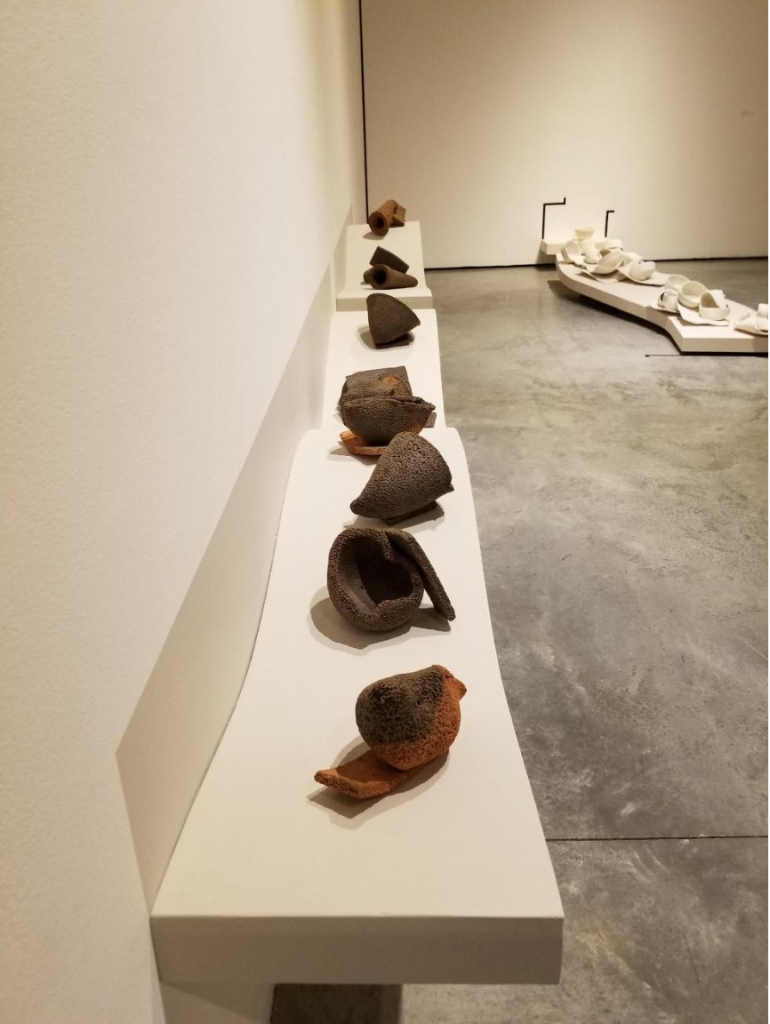
Figure 1 Froese, Robert. Twelve Tone Study (Wall), White Tone Composition (Back). 2018, ceramics, wood shelves, wood platforms, paint, gaffers tape, Illingworth Kerr Gallery, Calgary.
Twelve Tone Study was created at the beginning of Robert Froese’s MFA, these works are more finished the compositions found on the floor. These works explore forced erosion of the clay, and are then fired, glazed, and fired to temperature. They are also displayed on curved shelves, which act to almost mirror the opposing wall. White Tone Composition, is similar to Extended Composition/Terra Cotta, being that both work display bisque clay on wooden platforms, however White Tone Composition is shorter, made of white clay and has a different rhythm.
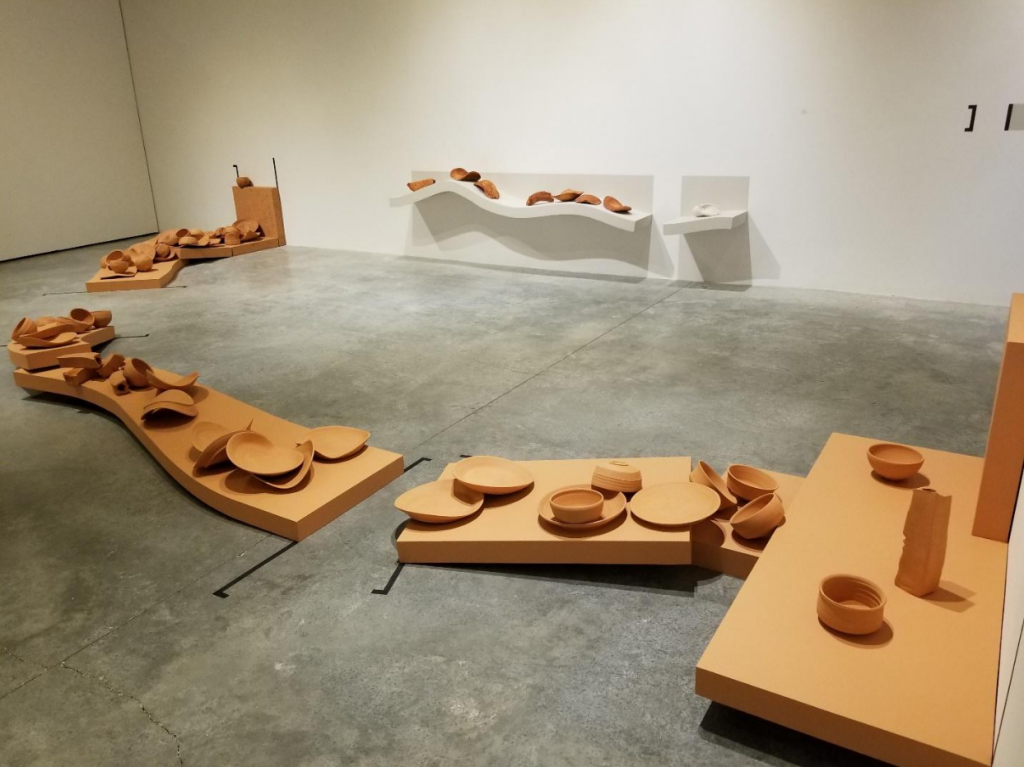
Figure 2 Froese, Robert. Extended Composition/Terra Cotta (Front), Walking Octave (Wall). 2018, ceramics, wood shelves, wood platforms, paint, gaffers tape, Illingworth Kerr Gallery, Calgary.
Extended Composition/Terra Cotta, is part of Robert Froese’s MFA thesis show Measured Compositions, and is about musical composition, rhythm, and memory. This work is placed at ground level to remind the viewer of long walks on the beach. The gaffer tape is to inform us of the musical connection, as the pots make a visual reference to sound, and music. Walking Octave, located on the wall, is displayed on wave shaped shelf, which aids in the beach walk memory. This work was created at the end of his Masters Degree and acts as a solemn farewell, or like the remaining vibrations of a final cord being struck on a piano.
Bio
- 1992
Alisha Marie received her BFA in Ceramics from the Alberta College of Art + Design in 2018, and Level 1 certification in Expressive Arts Therapy in 2013. Working with clay, slip decoration, and ise katagami, Alisha’s practice discusses personal narrative and works to demystify struggles that pertain to mental illness.
Works Cited
“Ceramics a Fragile History”. British Broadcasting Corporation, April 16, 2012.
Cooper, Emmanuel. 10,000 Years of Pottery. Fourth Edition ed., Philadelphia, University of Pennsylvania Press, 2000.
Fogerty, Elsie. “Rhythm.” The Craft Reader. Editor Glenn Adamson, 2010, pp 366-371.
Koren, Leonard. Wabi-Sabi for Artists, Designers, Poets & Philosophers. Point Reyes, California, Imperfect Publishing, 1994, pp. 23-42.
Rhodes, Daniel. Clay and Glazes for the Potter. Revised Edition ed., Radnor, Pennsylvania, Chilton Book Company, 1957.
by Carole Epp | Jan 26, 2018 | job posting
The School of Craft + Emerging Media at ACAD welcomes applications for the following limited term faculty appointment commencing end of August 2018 until April 30, 2019: Visiting Faculty, Ceramics
The Alberta College of Art + Design (ACAD), founded in 1926, is one of Canada’s most distinguished training grounds in art, craft, and design. ACAD offers a broad and dynamic spectrum of study at the undergraduate and graduate levels. Its 14 academic departments offer courses in diverse disciplines including art history, theory, and criticism; ceramics; fibre; glass; jewellery and metals; painting and drawing; performance; photography; printmaking; sculpture; sound; media arts; graphic design; advertising; character design and illustration. In addition to studio-based education and training, a strong program in liberal studies emphasizes the critical role that the humanities and social sciences can play in students’ development.
Innovation and renewal in our curriculum is an ongoing process that responds to cultural and technological shifts in arts, crafts and design practice on students’ curricular needs. Our faculty comprises renowned professionals who are first-class instructors as well as active practitioners. As leaders in their fields, they are committed to building a diverse, stimulating environment for the exchange of ideas and the acquisition of technical skills and crafts.
ACAD is located in Calgary, Alberta in the foothills of the Rocky Mountains. Calgary is a cosmopolitan urban centre, with a diverse population of over 1.2 million people. This vibrant city has outstanding post-secondary and cultural institutions as well many varied recreational opportunities.
About the School of Craft + Emerging Media, Ceramics Program
ACAD’s Ceramics faculty is a diverse, engaged group of notable teachers and practitioners connected to the field at home and abroad. Each year, a new visiting artist complements the energy and expertise of ceramics faculty, teaching and working alongside students in the studio. The visiting artist contributes a fresh and diverse perspective, enhancing the learning experience and serving as a catalyst for critical dialogue within the college.
In the Ceramics program students explore the role of function, sculptural approaches, emerging technologies, historical precedents, and contemporary practice within a comprehensive, studio-based and theoretical program of study.
>>Click here to find out more about SCEM, Ceramics Program
The Opportunity
(Competition # 1718-JA-FT-20)
To complement existing instructional resources, this position will instruct four (4) 4.5 hour-long studio courses at all levels of the undergraduate BFA in Ceramics program. Salary will be commensurate with experience and education. In addition, the successful candidate will be provided with two (2) course releases towards research and studio practice. They will be required to report and present on research activities as well as mount an exhibition of their studio practice and research at the College while in residence at the College.
The successful candidate will be capable of teaching all forms of Ceramic practice through core courses and studio supervision, including vessel, sculptural, figurative, installation and performance. The candidate will possess an active studio practice that will contribute to the breadth of the program and demonstrate a critical and creative engagement with contemporary discourse on Craft and Ceramics. In combination with a collaborative spirit and professional commitment to the field, experience in academic service, curricular innovation, and Ceramics studio management will be considered an asset.
Responsibilities include:
- Teaching four (4) x 4.5 hour long studio courses at all levels of ACAD’s Ceramics program
- Maintaining a research/studio practice, and contributing to research and scholarship in the field of contemporary Craft, specifically Ceramics
- Creating and exhibiting a new body of work
- Reporting and presenting on research activities in the form of artist talks and/or workshops
- Demonstrating a commitment to pedagogical and academic excellence
- Participating in academic service, curricular program development, and the management of the Ceramics studio environment (as appropriate)
-
The successful candidate will have:
- An MFA or an equivalent degree or combination of education and professional experience in Ceramics
- Previous post-secondary teaching experience
- A professional exhibition record as a Ceramist
- Excellent technical skills, and a wide knowledge of all aspects of the discipline, with a particular regard for international practice in Ceramics
- Be community-oriented; comfortable interacting with students, faculty, artists, and the public; and able to balance between research, practice, and pedagogy
Preference will be given to applicants with a strong studio practice in experimental or sculptural ceramics.
Full details and application process can be found here.
by Carole Epp | Sep 11, 2017 | job posting
Do you believe in the power of ideas, possibility, and in building community? ACAD is looking for an innovative Educational Art Technician, Ceramics who is excited to contribute to a creative learning environment and provide support to our faculty and guidance to our students in Ceramics.
This position normally has an annual recurring start of late August to end of May and regular hours of work are 35 hours per week.
Why ACAD?
A leading centre of education and research since 1926, ACAD energizes art and design in Canada and internationally. We engage the world, create possibilities, and connect with brilliant minds in all corners of the globe. Above all, we are passionate about art and design and the people who create it. Calgary is our home base – a vibrant, cosmopolitan urban centre, a safe and friendly atmosphere, and outstanding potential for adventure in nearby mountain parks. We hope you will join us at ACAD (where creativity matters).
About the School of Craft + Emerging Media, Ceramics Program
In the Ceramics program students explore the role of function, sculptural approaches, emerging technologies, historical precedents, and contemporary practice within a comprehensive, studio-based and theoretical program of study.
>>Click here to find out more about SCEM, Ceramics Program
The Opportunity
(Competition #1718-SE-AP-06)
Reporting to the Manager, Academic Administration and accountable to the Chair of the School of Craft + Emerging Media and working with the Lead Educational Art Technician, the incumbent provides general supervision and oversight of the facility, equipment, processes and materials to ensure safe and effective instructional support during class time and ensures standard operating practices are followed to support student studio practice during general facility access hours.
Primary duties/responsibilities include:
- Conducts demonstrations, training and orientation for faculty, students and staff on standard operating practices for the uses of equipment, processes and materials handling, including daily clean-up and equipment/materials storage
- Advises students with respect to program-related technology, equipment, processes and materials to meet curricular objectives; provides guidance and support for the installation of student work
- Works in consultation with the Health and Safety Officer and other Educational Art Technicians to maintain current and consistent documentation of hazard assessments and standard operating practices
- Prepares and maintains program spaces including classrooms, studios, workshops and monitors facility users to ensure appropriate health and safety practices are followed
- Maintains materials and equipment inventory, performs preventative maintenance and repair as necessary
The successful candidate will have:
- A Four (4) Year Diploma or Baccalaureate Degree in fine art with a relevant subject area specialization
- A Minimum of three (3) to five (5) years’ experience as a practicing artist or technician, with knowledge of relevant studio practices and experience in training students
- A Current Standard First Aid certification and Workplace Hazardous Materials Information System (WHMIS training). Proficiency with ceramic technologies, including 3D modelling, printing and decal printing is preferred
- Demonstrated proficiency with electric and gas kin operation (reduction, oxidation and soda), hand building and wheel techniques, glaze technology, studio and equipment maintenance, clay reconditioning, slip casting and mold making
- Demonstrated experience with wood and metal fabrication
- Demonstrated experience with art installation and preparatory techniques
- Excellent communication skills with ability to provide constructive support, guidance and mentorship to students, faculty and staff
- Demonstrated ability to promote home studio etiquette, best practice and conflict management
- Excellent organization and planning skills, meeting multiple deadlines and commitments
- Proficiency with Microsoft Office, Rhino and Adobe Creative Suite applications.
- Comfortable and able to work safely at heights
Working Conditions
- Works in a studio environment which includes contact with hazardous equipment and materials. Heavy lifting of up to 50lbs is required regularly. Personal protective equipment is required for operation of certain equipment and processes. Standing and/or sitting for lengthy periods. Occasionally works in an office environment.
As a member of the AUPE bargaining unit (Local 071/006), this regular recurring position falls under a classification 7 (seven). The starting annual salary is $59,244 – 63,468 dependent upon skills, education and experience, and is pro-rated based on actual hours worked.
Full details here.



